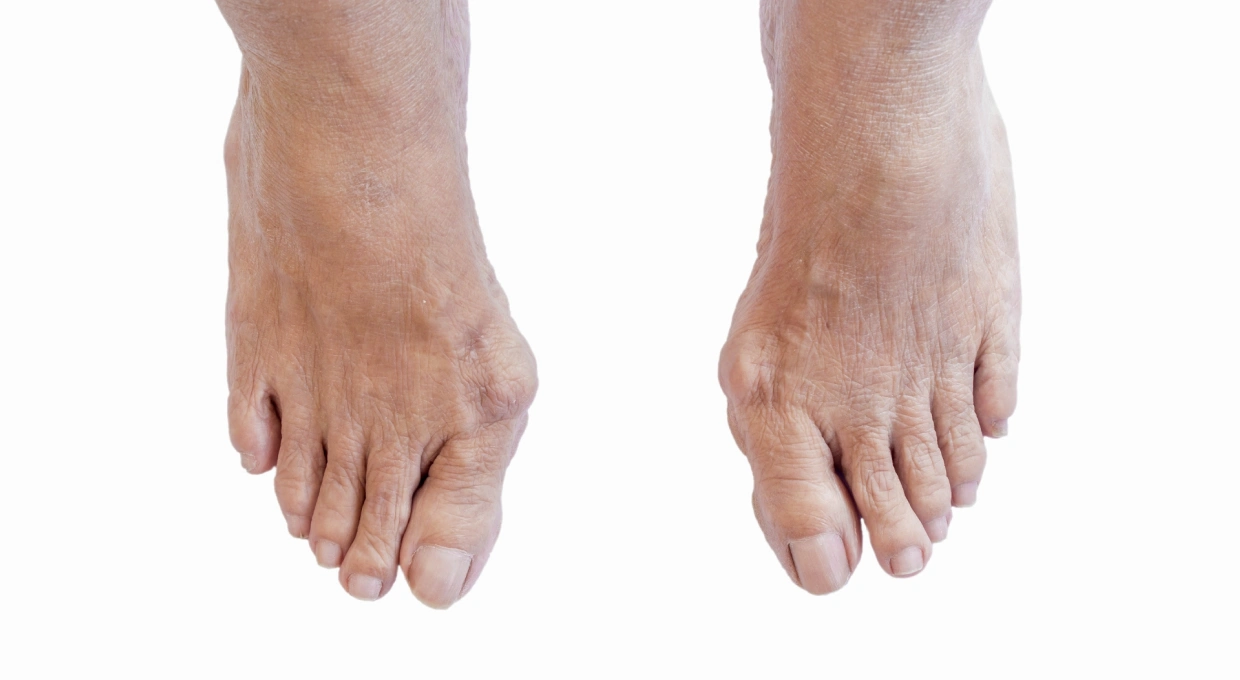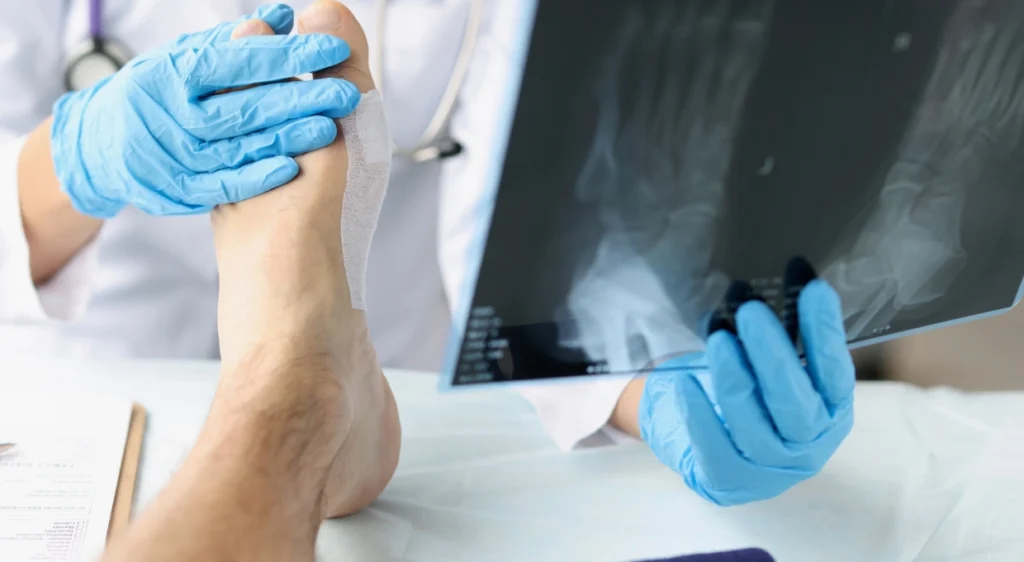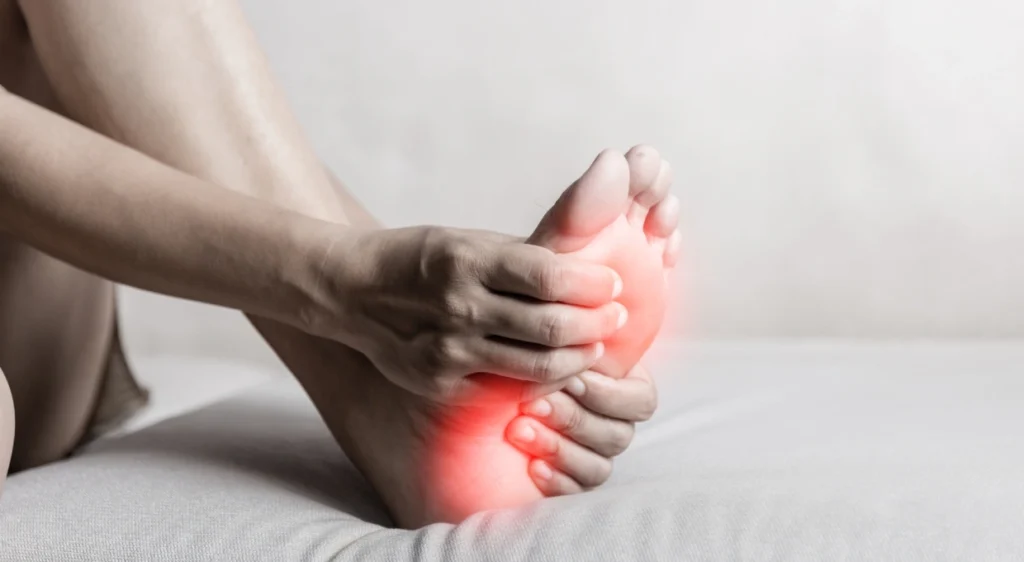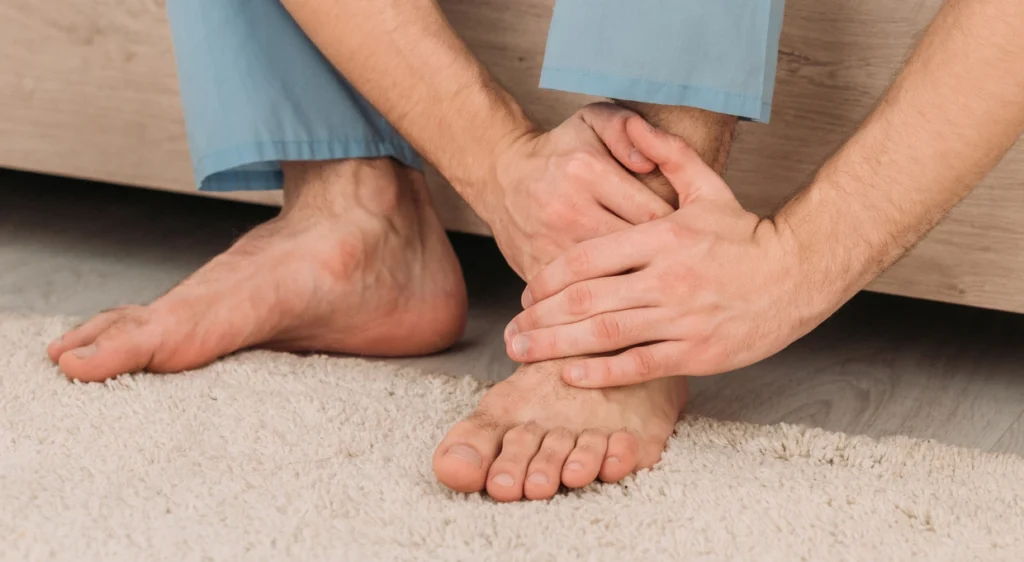Bunions, known medically as hallux valgus, are bony deformities at the base of the big toe that cause pain and can affect quality of life. In this article, updated for 2024, we will explore how to prevent bunions, their causes, current treatments and practical recommendations, highlighting the advances of Clínica San Román, a pioneer in minimally invasive surgery with more than 40 years of experience.
What are bunions?
Bunions are bony protrusions that form in the big toe joint. This condition occurs when the toe bone deviates toward the second toe, causing a deformity that can be painful and aesthetically displeasing.
Causes of Bunions
The main causes of bunions include:
- Genetics: A hereditary predisposition may increase the risk.
- Inappropriate Footwear: Wearing tight-fitting, high-heeled or narrow-toed shoes.
- Medical Conditions: Diseases such as rheumatoid arthritis.
- Foot Abnormalities: Flat feet or high arches.
Common Symptoms
Symptoms of bunions can vary, but the most common include:
- Pain in the big toe joint.
- Swelling and redness around the lump.
- Calluses at the base of the finger.
- Restriction of the movement of the big toe.
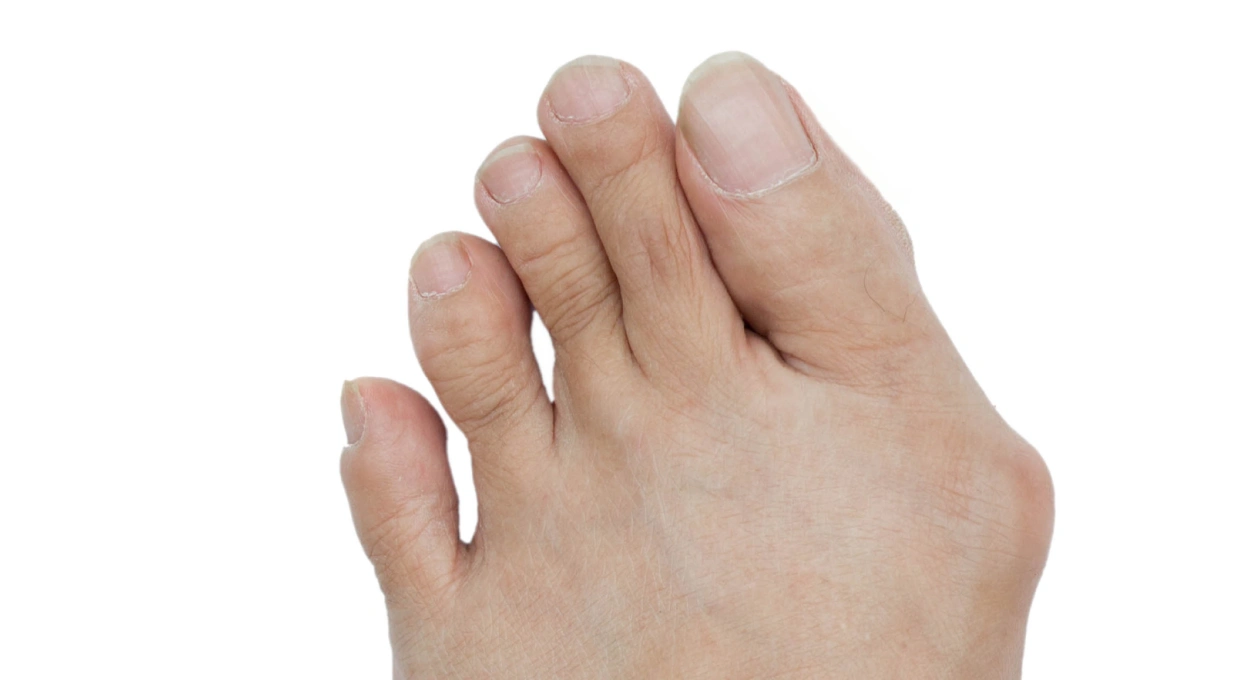
Prevention of bunions
Prevention is key to avoiding the appearance of bunions. Here are several effective strategies:
Use of Appropriate Footwear
- Roomy, Comfortable Shoes: Be sure to wear shoes with plenty of room for your toes.
- Avoid High Heels: High heels put pressure on the forefoot, contributing to the formation of bunions.
- Orthopedic Insoles: Use insoles that provide good arch support.
Foot Exercises
- Stretching and Strengthening: Perform specific exercises to stretch and strengthen the muscles of the foot and leg.
- Toe Rotation: Rotates the toes to improve flexibility and reduce stiffness.
Regular Foot Care
- Foot Baths: Soak your feet in warm salt water to relieve pain and inflammation.
- Massage: Massage the feet regularly to improve circulation and reduce tension.
Current Treatments
If you already have bunions, there are several treatments available, from non-invasive methods to surgery:
Non Invasive Treatments
- Orthotics and Pads: Use of night splints and gel pads to relieve pressure.
- Medications: Anti-inflammatory drugs to reduce pain and swelling.
- Physical therapy: Physical therapy to strengthen muscles and improve mobility.
Surgical Treatments
Clínica San Román, with more than 40 years of experience, is a leader in modern procedures that correct deformity with minimal incisions and reduced recovery time.
- Minimally Invasive Surgery: Procedures that correct deformity with minimal incisions.
- Osteotomy: Realignment of the bone by cutting and repositioning.
- Arthrodesis: Fusion of the affected joint in severe cases.
Final Recommendations
Maintaining good podiatric health is crucial to preventing bunions. Here are some additional recommendations:
- Regular visits to the Podiatrist: Regular visits to a specialist can detect problems early.
- Maintaining a Healthy Weight: Excess weight can increase pressure on the feet, contributing to the formation of bunions.
- Education and Knowledge: Be informed about foot health and adopt healthy habits from an early age.
Call to Action
At Clínica San Román, we specialize in the prevention and treatment of bunions with advanced and minimally invasive techniques. Our team of professionals with more than 40 years of experience is here to help you keep your feet healthy and pain-free. Don’t wait any longer to improve your quality of life! Schedule your appointment today and find out how we can help you. For more information about podiatric treatments and care, visit Clínica San Román‘s blog.
